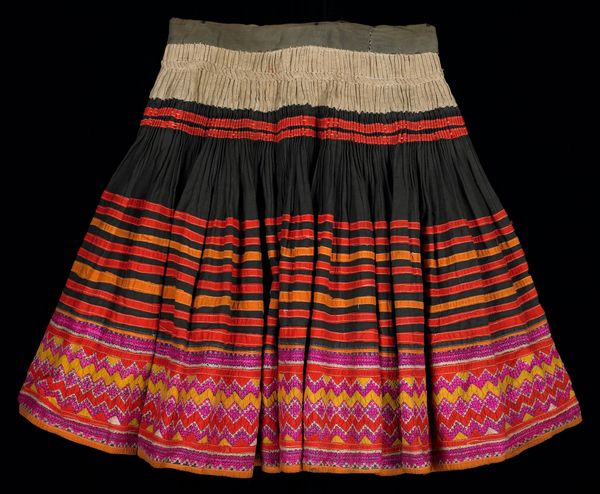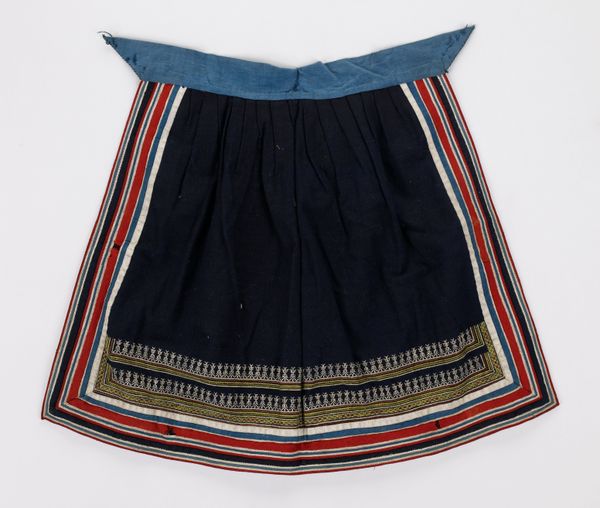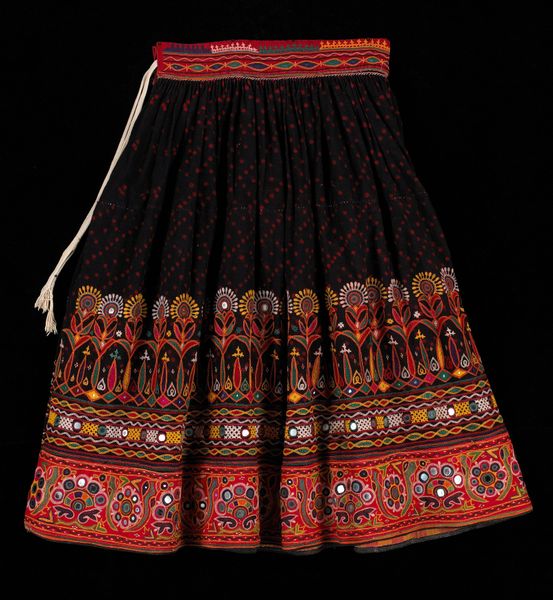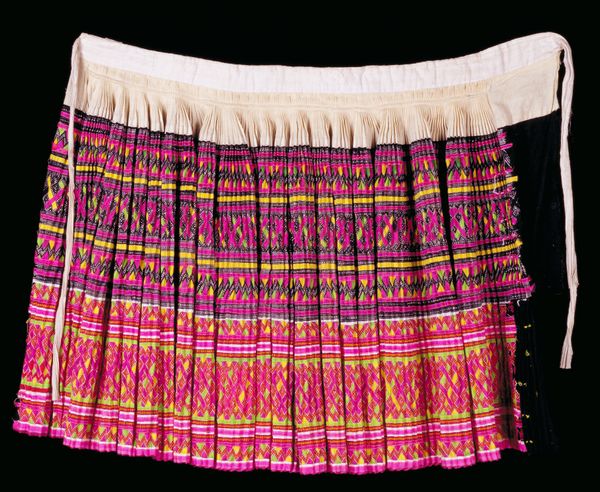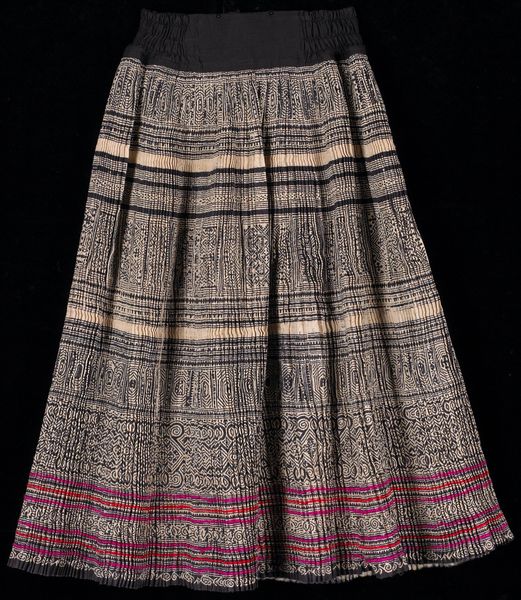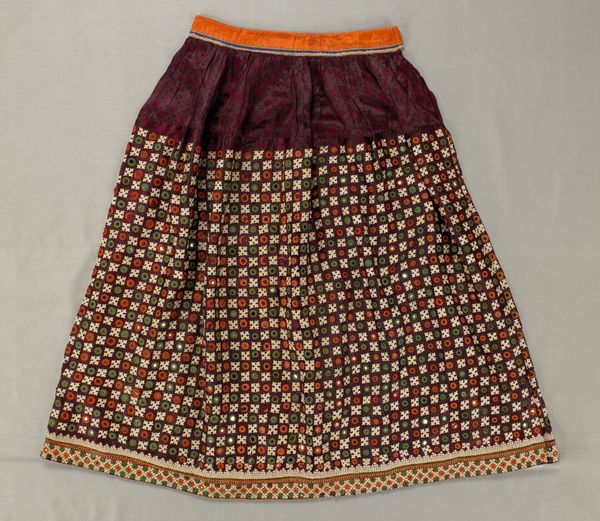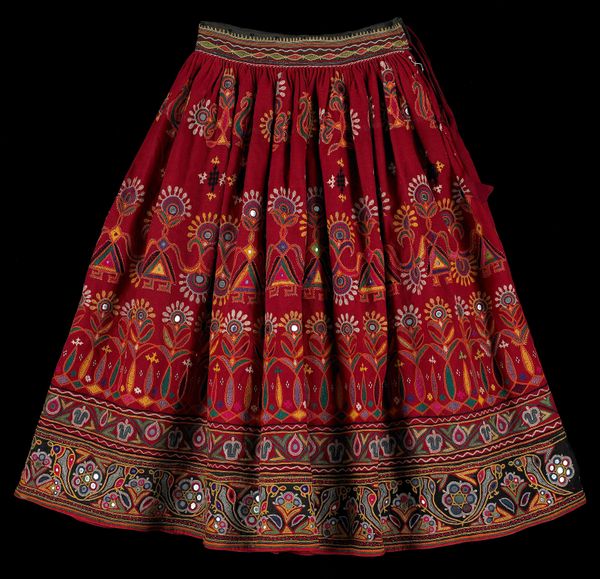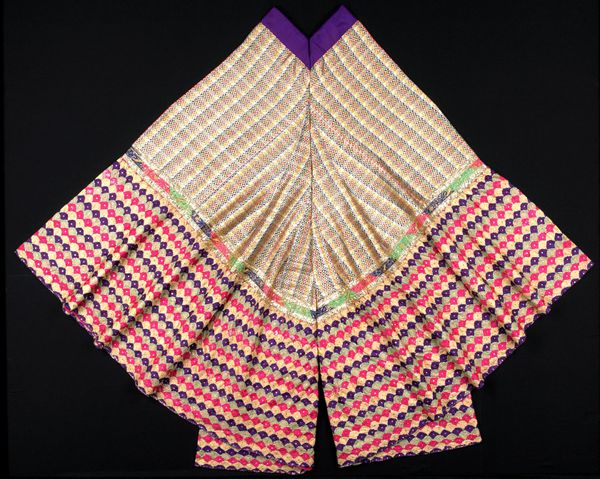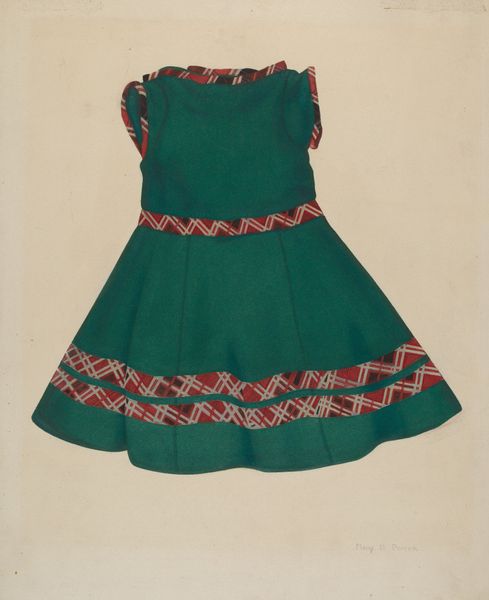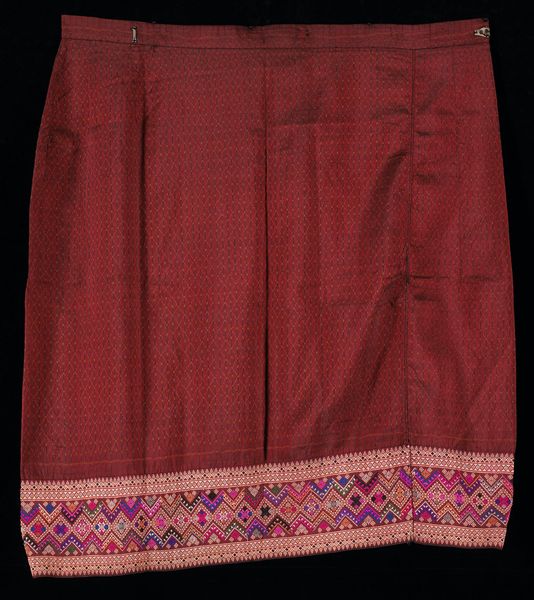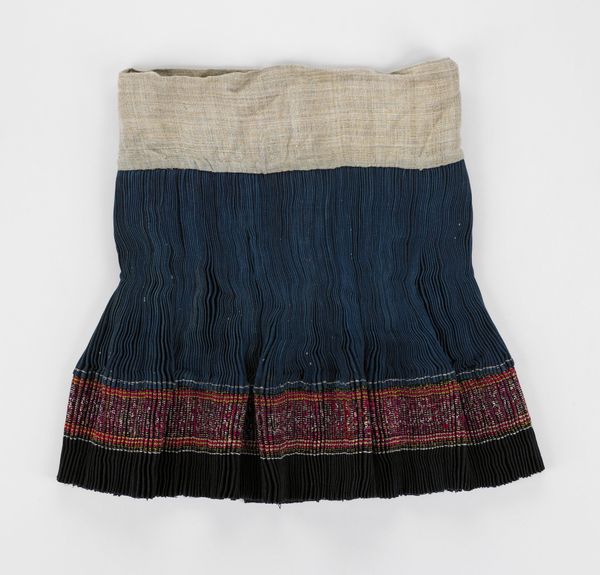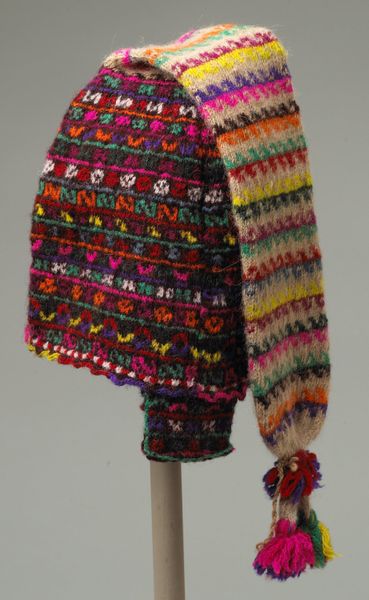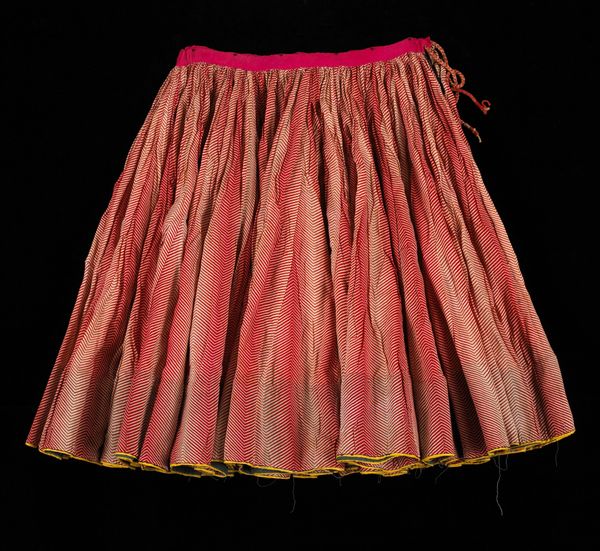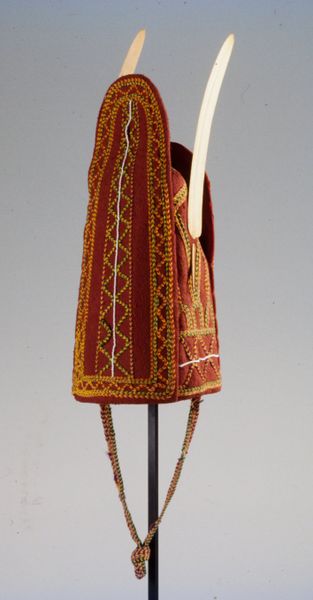
fibre-art, weaving, textile, cotton
#
fibre-art
#
asian-art
#
weaving
#
textile
#
hand-embroidered
#
folk-art
#
cotton
#
decorative-art
Dimensions: 22 x 225 in. (55.88 x 571.5 cm)
Copyright: Public Domain
Editor: Here we have a "Skirt," dating from around the 20th century, created by a Hmong artist. The piece utilizes cotton, manifesting as a weaving, and, based on appearances, possibly other textiles and fibre arts. It's so vibrant. The detailed hand-embroidery is amazing, and I’m curious about how such pieces transcend purely decorative uses. What’s your interpretation of this work? Curator: Looking at this Hmong skirt, I’m immediately drawn to the materiality and production. Consider the labor involved in creating such an intricate textile, the hand-embroidery, the dyeing process for that indigo. We can examine the social context through its creation, asking how this object challenges distinctions between "high art" and craft. What can the means of production tell us about the cultural economy that enabled it? Editor: That's a very interesting view! I hadn't considered the amount of labour involved. Do you think that the cultural association plays into it being displayed in a museum? Curator: Precisely. Displaying this in a museum reframes our understanding. It’s not just about aesthetics. Think about how raw materials like cotton were sourced, transformed, and imbued with cultural significance through design and skill. Does the museum’s display impact your sense of the skirt's cultural or economic relevance? Editor: Absolutely! I appreciate your perspective. Seeing the skirt through the lens of its creation and labor transforms my understanding of its value and purpose. It pushes back on the idea that 'craft' is somehow less significant than 'art'. Curator: Exactly. By focusing on materials, labor, and social context, we understand art as an integrated part of everyday life and labor. It also invites us to think about our own consumption and relationships to textiles.
Comments
No comments
Be the first to comment and join the conversation on the ultimate creative platform.
